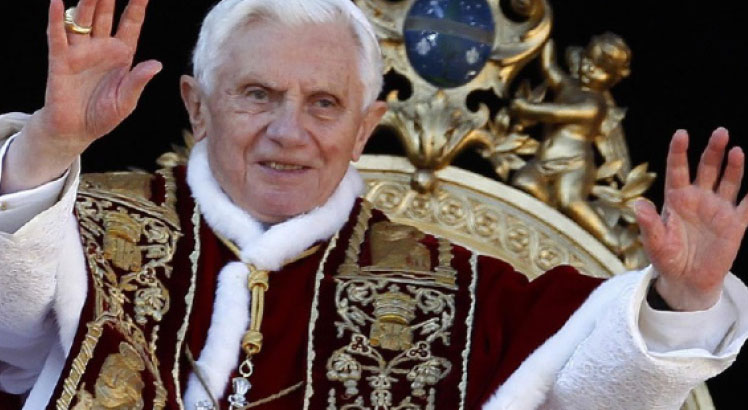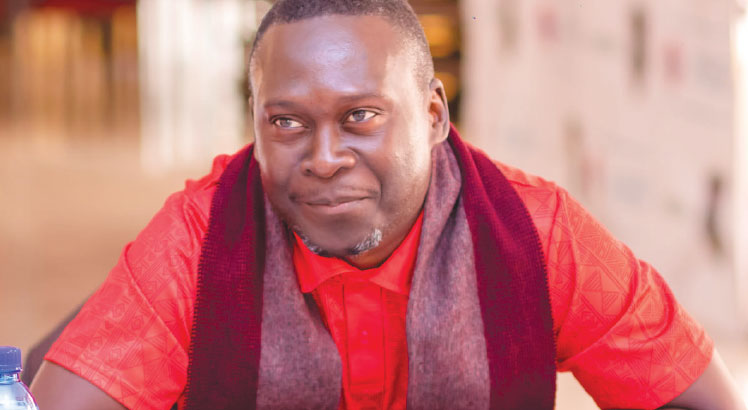Pope Emeritus Benedict XVI, who will be remembered for being the first head of the Roman Catholic Church to resign in 600 years, died yesterday at his home at the Vatican.
The retired pontiff’s health started to decline during the Christmas season and Pope Francis called the faithful to pray for his “very sick” predecessor on Wednesday. He was 95.
The emeritus pope’s body will be brought to St. Peter’s Basilica tomorrow, the Vatican announced yesterday.
Before he was elected by his fellow cardinals in 2005 to become the first German pope, Benedict had already left an indelible mark in Catholic theology and thinking as the prefect of the Congregation for the Doctrine of the Faith under his predecessor, Pope John Paul II.
His rigorous, usually conservative interpretations of church teaching and discipline earned him the nickname “God’s Rottweiler,” in stark contrast with the shy, introspective and art-loving man depicted by his friends.
His death put an end to the complexities of having two popes reside in the Vatican.
This is the first time in the modern era that a pope has died while another is in power, leaving aside the need for a conclave of cardinals to elect his successor.
Benedict XVI spent the last years of his life in relative isolation at the Vatican, living in a monastery within the city-state’s walls, surrounded by a handful of aides and supporters.
He made only a few public appearances with Pope Francis.
When Cardinal Josef Ratzinger emerged as Pope Benedict XVI in the conclave of 2005, he was faced with the challenge of following the charismatic John Paul II, whose influence went beyond the Catholic Church in a nearly three-decade-long pontificate.
John Paul was credited with a role in the defeat of communism and the fall of the Iron Curtain.
Through his massive popularity and his experience in the persecuted church in Poland, he fuelled a deep conservatism in the Catholic Church, ready to fight against the perceived dangers of communism and the looming larger threat of secularism.
Benedict was seen as a continuation of this conservative push against secularisation, but with a scholarly bent.
His choice of the name Benedict signalled in particular his desire to awaken the faith in the church’s ancient home in Europe, according to the Reverend Maurice Ashley Agbaw-Ebai, a theologian and author of Light of Reason, Light of Faith, Joseph Ratzinger and the German Enlightenment.
“For someone with a symbolic sense and temperament, Ratzinger’s choice of the name ‘Benedict’ was programmatic: the desire to re-engage Europe and the West with a proposal of the Gospel message of Jesus Christ,” said Ashley Agbaw-Ebai in an email to Religion News Service.
“Benedict believed that reason and love can serve as a better foundation for the freedom that the West seeks and desires,” he added.
Early on in his pontificate, Pope Benedict XVI began the beatification process for John Paul, waiving the traditional five-year waiting period.
Half of Benedict’s first encyclical, an official papal document called “Deus Caritas Est,” was written using the incomplete writings of John Paul.
Benedict also paid tribute to his predecessor after being elected pope in 2005.
He said: “Dear brothers and sisters, after the great Pope John Paul II, the cardinals have elected me, a simple, humble labourer in the vineyard of the Lord.
“The fact that the Lord knows how to work and to act even with insufficient instruments comforts me, and above all, I entrust myself to your prayers.”
Born April 16 1927, Benedict was ordained a priest in 1951 in his native Bavaria, Germany, and soon entered a circle of influential Catholic theologians of the 20th century such as Hans Urs von Balthasar and Henri de Lubac.
Initially he was drawn to the progressive theological currents of the Nouvelle Théologie that ushered in new ideas for the reform of the church.
He participated in the Second Vatican Council, which was called by Pope John XXIII to reform the church, working as a theological adviser to German Cardinal Josef Richard Frings, who advocated on behalf of the Jewish people during the Nazi regime, which Ratzinger had also experienced as a youth.
The suit-wearing young Ratzinger was considered a reformer at the time, working closely with some of the most progressive theologians present at the council.
The sexual and cultural revolution of 1968 put an end to Ratzinger’s progressive leanings, and his views became more conservative.
After being appointed bishop of Munich and Freising in 1977 — and made cardinal the same year — he went to the Vatican in 1981 to take over the role of prefect of the Congregation for the Doctrine of the Faith (now the Discastery for the Doctrine of the Faith), charged with addressing important theological and doctrinal matters of the Catholic Church.
The bookish Ratzinger was reluctant to take on the high-profile position, and John Paul had to ask several times before Ratzinger accepted.
Even after going to Rome, he asked to be dismissed by the pope to work in the Vatican Library, but was denied.
His brief time as bishop in Munich came to haunt him years later, when a report in January 2022 accused him of covering up abuse by priests.
Benedict denied any wrongdoing while condemning sexual abuse and cover-up in open letters.—Religion News Service
The post Pope Emeritus Benedict XVI dies at 95 appeared first on The Nation Online.
 Moni Malawi
Moni Malawi 

